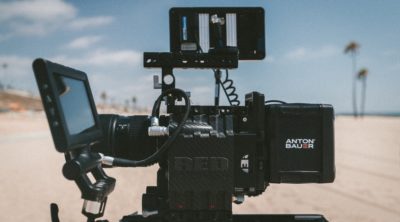< Back to all posts
Best Practices for: Shooting Video in the Operating Room
We all know the common uses for corporate video…employee training, information dissemination, safety…but let’s take video a step further: Technology has made leaps and bounds, and keeps advancing exponentially every year. As video technology becomes increasingly more sophisticated, the applications of video become more widespread. One of the many ways higher quality and more sophisticated video have been utilized is for scientific and medical research. Shooting medical video on location – especially in an operating room – is a delicate and very necessary process for these uses. Allan Chipps of BroadcastMed gave me some insight on some of the best practices for shooting video in the OR:
“Patient care is first and foremost. You need to make absolutely sure that you have consent of every person that will be in that room – HIPPA has guidelines that need to be followed in order to use footage from the OR. You must have a good relationship with the medical staff as well. They have to trust you, or you risk not being able to get a particular shot you’ll need.”
It’s no secret that hospital lighting creates a harsh atmosphere. Getting a shot that “looks good” may not be in the cards for a typical medical shoot.
“The best equipment for use on site is compact. It’s not going to give you quality. The operating room is very tight, and it’s more important that you are able to physically get in and not be in the way of the surgeon and other medical personnel.”
One thing that’s important to keep in mind when shooting video in the OR is safety and sterility. Allan pointed out that it’s crucial that all crews involved go through basic OR training courses that teach all of the periodicals for sterility and what to do if anyone comes in contact with bodily fluids (read our interview with Valerie Nolan on certifications and vaccines here). Being educated and prepared is the most important step a crew can take to ensure the safety of themselves and the patient on the table.
While we’re on the subject of education and preparedness, Allan says he can’t stress enough the importance of planning when it comes to shooting video in an operating room.
“As with any video shoot, something unexpected can always pop up and derail your shoot. The best thing you can do to prepare is your research. Know the routine, know the doctors, and know the OR staff – especially since you’re not going to have a second take. You can’t have a doctor remake a cut if you miss it. You need to know the steps of the surgery first so you can make sure to communicate with your OR team about what is coming up next and the best place to be in order to get the right shot. Plan, plan, plan – that’s the only way you can ensure you will have a good OR video.”
Here at Crews Control, we do extensive video work with clients in the medical industry. If your company needs a video for medical or research purposes, we can match you with the perfect video crew anywhere in the world – our crews are highly skilled and experienced, educated, and vetted. Call us at 1.800.545.CREW for any additional questions and click here for a free quote.
And don’t forget to connect with us socially – Facebook, Twitter, and LinkedIn.







Here's some of what I can tell you from my 28 years of shooting experience, with much of it in the OR both here in the US and in 16 foreign countries. Shooting in foreign countries is a whole other topic…
1) Read Valerie's article regarding vaccines and vendor vetting agencies. I had to get cleared through Vendormate two years ago and it took about four hours and a couple hundred dollars in fees. The tests were all on line and pretty easy to pass. All fees were reimbursed by the client, but just be prepared to pay for them yourself online with a credit card and wait on the reimbursement.
2) Keep your TB test current! It takes 48 hours (I think this is right) to have the test read. A TB test most likely will not be included on your list of immunizations because it is NOT an immunization, it is merely a test! Plan ahead and always keep it current. Furthermore, if you are doing medical work overseas, you may have to take a series of immunizations that can take days, weeks or even months (one of the hepatitis vaccines, if I remember correctly) to complete.
3) Try to plan a scout day PRIOR to shooting in the OR. Some hospitals require that their IT Departments inspect your electronic equipment before it can be brought into the OR. If it does not have their sticker, it doesn't go into the room. I have only seen this at a few hospitals so far.
4) Another thing you want to test when you are in the OR on your scout day is equipment compatibility. I've shot a lot of procedures where the client needs a feed from the surgical camera. Often times these machines will have a BNC out, though it may be difficult to locate and test. Some are behind panels that are only accessible with a screwdriver. This is why you come in the previous day. Furthermore, if your recorder only takes an SDI signal, some of the older scopes may only output an analog signal and your SDI or HD recorder will not work if it accepts only an SDI or HD signal! Be prepared!
5) Be prepared to wipe down ALL of the equipment that you take into the OR with a germacide. Wear gloves when you wipe down the gear as this is strong stuff! You also could be allergic to it… I found out that I am highly allergic to the surgical scrub called chlorahexadine.
6) You may also be asked to drape all of your equipment that is in close proximity to the patients' surgical sight. Know all of your camera controls by feel. Once the camera is completely draped you cannot remove the covering.
7) Start the OR shoot with empty media cards and all your audio figured out before hand. I often put a wireless mic on the surgeon. This has to be put on his scrubs collar and be switched on BEFORE he puts on his sterile surgical gown. You cannot touch the surgeon once he has gowned up in the OR!
8) Most surgeons use extremely bright lights either from two overhead fixtures or from their head lamps. These lights are often three to five stops brighter than the rest of the room and will play havoc with your exposure. Often times you can ask the surgeon (nicely) if he/she will turn down (or off) the lights as long as it will not compromise their work. Be bold! It has been my experience that typically the surgeon you are shooting has a vested interest in the video you are shooting so they will often comply. I often place a 1K Tota light off to the side of the OR and bounce it off the ceiling to give a brighter ambiance to the room, though most ORs are already pretty bright. The brighter the room, the better for your shooting. Brighter surgical area means higher f-stop, which converts to more depth of field, especially as you will most likely be on a longer lens (zoomed in tight). You want everything as sharp as possible.
9) You can also nicely ask a surgeon to move a bit to the left, etc. to help you to facilitate getting the shot. The same goes for the nurse or surgical tech who is assisting. I have also found that you can ask a surgeon to wait a second while you move a bit for a better angle, etc. before he starts a procedure. Again, it has been my experience that surgeons have always been very accommodating as long as it does not compromise the surgery or the patient. Your pre-surgery meeting is where you will go over what procedures will happen and what machines (if any) will be needed, i.e. X-ray, scopes, etc. Sometimes you may need to clear out of the way for a machine to be rolled in, or you may need to put on a lead apron if they are using some types of scopes, scanners or X-rays.
10) Expect to have to change into scrubs or a bunny suit for the surgery. You will also have to wear a mask and a surgical cap. Some people get claustrophobic in a mask; get over it 'cause you have to keep it on while there is a sterile field in the room.
11) Do not bring bungee cords or rubber bands into the OR! I tried to bungee some cables on my jib once and was told they are forbidden. If you accidentally let go of one as you are installing it or adjusting it (or if it fails) it could fly into the surgical field.
12) If you start feeling dizzy because of the blood (or guts), turn the chroma off on your monitor and watch everything in black and white. It takes the gore out. Also if you start feeling woozy, lock off the camera and keep rolling and sit down with your head between your knees. You don't want to become a liability while they have a patient on the table.
13) If you should see a patient "code" or flatline, on the table, shut the camera off and get out of the room or as far away from the table as you can. The room will get VERY busy and you do NOT want to be in anyone's way. If there is a lawsuit that is generated from the surgery, all your footage will be entered as evidence for and/or against the doctors. I am not a lawyer, but my opinion is that it is best to shut the camera off immediately and get out of the way (been there, done that).
14) There is the possibility that you could watch someone die, especially if you are working in a third world country where doctors do not have access to all the latest technology. This might probably be the most somber and emotional thing you will ever see and you will never forget it. Been there…
15) Don't eat gas-producing food prior to your day in the OR. Breaking wind is in bad taste and form in the OR, and some hospitals consider that this destroys the sterile field. You would become extremely unpopular.
16) Cadaver surgeries are way more easier than surgeries on live patients, as there is no sterile field so you don't have to be so sensitive to what you touch or where you stand. I have an interesting story about a shoot I did about ten years ago involving implanting an artificial ankle joint on a cadaver…
Safe Shooting,
Jon Cermin